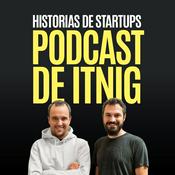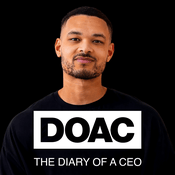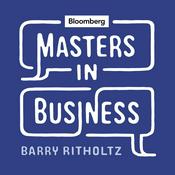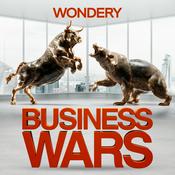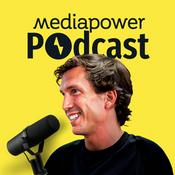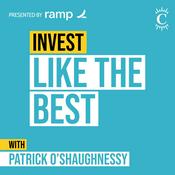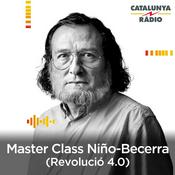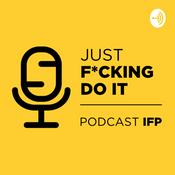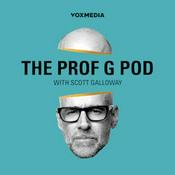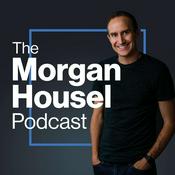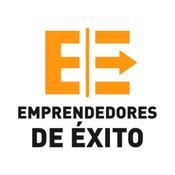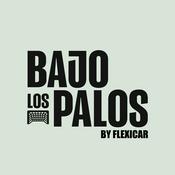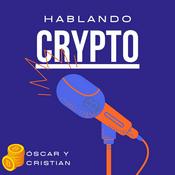38 episodios

Craftsmanship, apprenticeship, and getting the most from AI with Scott Hanselman (Microsoft)
18/12/2025 | 42 min
Why does so much software still feel broken, even after years of new tools and processes?On this episode of Distributed, host Jack Hannah sits down with Scott Hanselman, Vice President of Developer Community at Microsoft, to explore how fear-driven development, speed-first incentives, and short-term thinking continue to shape modern software.Scott reflects on why craftsmanship has become rare, how some teams still manage to do quality work, and how today’s engineering systems influence the outcomes we see. The conversation also examines how AI is changing the day-to-day experience of engineers, why junior developers need much more support, and what stronger apprenticeship models could look like in practice. Scott shares ideas for investing in people over the long term and building meaningful communities across distributed teams. This episode offers a clear lens on what it takes to build better software by investing in people and systems together.—Where to find Scott Hanselman:• X: https://x.com/shanselman • LinkedIn: https://www.linkedin.com/in/shanselman • Blog: https://www.hanselman.com/blog• Newsletter: https://hanselman.substack.com• The Hanselminutes Podcast: https://www.hanselminutes.com • Scott and Mark Learn To Podcast: https://www.youtube.com/playlist?list=PL0M0zPgJ3HSf4XZvYgZPUXgSrfzBN26pf—Where to find Jack Hannah: • LinkedIn: https://www.linkedin.com/in/jack-hannah/• Website: https://tuple.app/—Timestamps:(00:00) Intro(01:25) Why so much software feels broken and why it persists(03:38) The outlier companies focused on quality software(04:30) What software craftsmanship looks like and why it’s rare(08:18) How to reduce fear-driven development(11:50) How AI reflects the flaws in today’s software practices(12:46) How AI affects senior and junior engineers differently(17:03) Rethinking the mentorship model for junior engineers(19:11) Best practices for a structured apprenticeship program (21:43) Delegate, verify, and integrate: a model for managing AI and junior engineers(22:05) Why pair programming isn’t enough on its own(27:07) The case for long-term investment in people(29:54) Where big tech has fallen short and created division(32:52) The indie web and alternatives to platform-driven tech(34:30) How to build community across distributed teams(38:20) Rapid fire round —Referenced:• Everything’s broken and nobody’s upset: https://www.hanselman.com/blog/everythings-broken-and-nobodys-upset• Instapaper: https://www.instapaper.com• Pocket: https://heypocket.com• 1Password: https://1password.com• Cabel Sasser’s website: https://cabel.com• Visual Studio Code: https://code.visualstudio.com • Boeing: https://www.boeing.com• Mark Russinovich on LinkedIn: https://www.linkedin.com/in/markrussinovich• Tech Promised Everything. Did it deliver? | Scott Hanselman | TEDxPortland: https://www.youtube.com/watch?v=dVG8W-0p6vg• IntelliSense: https://code.visualstudio.com/docs/editing/intellisense• Usenet: https://en.wikipedia.org/wiki/Usenet• POSSE: https://indieweb.org/POSSE• DuckDuckGo: https://duckduckgo.com• Amanda Silver on LinkedIn: https://www.linkedin.com/in/amandaksilver• Brain, Bytes, Back, Buns - The Programmer's Priorities: https://www.hanselman.com/blog/brain-bytes-back-buns-the-programmers-priorities• WeWork: https://www.wework.com• Simon Willison’s blog: https://simonwillison.net

Why some engineers never get promoted (and how communication fixes it) with Ivett Ördög
04/12/2025 | 45 min
On this episode of Distributed, host Jack Hannah sits down with Ivett Ördög, a 35-year software veteran and creator of Lean Developer Experience (aka Lean Poker), to talk about what it really takes for engineers to grow their impact. Ivett argues that communication, continuous delivery, and delivering value early are not soft add-ons but essential engineering skills that determine how far developers can go.Together, they break down how remote work can create better environments for deep focus and well-being, why strong communication skills often determine the jump from mid-level to staff, and how developers at any stage can begin practicing them. Ivett also shares when rewrites actually make sense, how to communicate them to management, and why continuous delivery gives teams the feedback they need to build the right thing.The episode offers clear, tactical guidance for any engineer looking to level up, advocate for better ways of working, and deliver value earlier and more often.—Where to find Ivett Ördög:• LinkedIn: https://www.linkedin.com/in/ivett-%C3%B6rd%C3%B6g-03aa9035/ • Website: https://www.ivettordog.com —Where to find Jack Hannah: • LinkedIn: https://www.linkedin.com/in/jack-hannah/• Website: https://tuple.app/—Timestamps:(00:00) Intro(01:17) The philosophy behind the Lean Developer Experience (02:24) Why Ivett now believes remote work produces better outcomes(06:45) Why people overlook the benefits of remote work(08:20) How remote work is customizable for needs and deep focus(11:48) Why communication is essential for developer career growth(14:52) Two communication struggles engineers face and how to begin improving(18:46) Where to find speaking opportunities (19:30) Tips for eager speakers with no stage experience(21:15) When rewrites make sense (28:14) How to communicate a rewrite to management(32:15) Ivett’s definition of continuous delivery (34:02) Examples of continuous delivery that show its value(36:54) How to drive change in a slow-moving organization(40:15) How Lean Developer Experience helps teams practice continuous delivery(42:45) The value of hands-on learning—Referenced:• Lean Developer Experience: https://www.ivettordog.com/leandeveloperexperience• Ted Talks: The Official TED Guide to Public Speaking: https://www.amazon.com/TED-Talks-Official-Public-Speaking/dp/1328710289• How to sell a big refactor or rewrite to the business? - Ivett Ördög - NDC Oslo 2025: https://www.youtube.com/watch?v=wdz90PQ2Ak4• Emily Bache’s Samman coaching website: https://sammancoaching.org• Jez Humble on LinkedIn: https://www.linkedin.com/in/jez-humble• Dave Farley’s Weblog: https://www.davefarley.net

The joy of doing it right: lessons from 50 billion downloads with Jesse Wilson (Cash App, Google)
20/11/2025 | 45 min
In this episode of Distributed, host Jack Hannah talks with Jesse Wilson, a longtime open-source contributor and Cash App engineer, whose work underpins much of the Java and Android ecosystem. Jesse shares why some of the most rewarding engineering work comes from doing things the right way, even when it’s the hard way.Their conversation dives into the story behind Okio, the I/O library for Android, Java, and Kotlin that’s been downloaded >50 billion times, and what it revealed about craftsmanship, risk-taking, and building for the long term. They also unpack how remote teams can bring back the spark of in-person collaboration by pairing more often, embracing small interruptions, and using shared artifacts to stay aligned.—Where to find Jesse Wilson:• Mastodon: https://cosocial.ca/@jessewilson • LinkedIn: https://www.linkedin.com/in/swankjesse • Blog: https://publicobject.com—Where to find Jack Hannah: • LinkedIn: https://www.linkedin.com/in/jack-hannah/• Website: https://tuple.app/—Timestamps:(00:00) Intro(01:28) Why the quick and bad way is never the right choice(04:07) A story from Okio that shaped Jesse’s engineering philosophy(06:39) How company culture empowered Jesse to build Okio(08:46) The challenges of building Okio(12:40) Why Okio was worth building(15:08) The value of spontaneous collaboration and why interruptions can be good(21:10) Handling friction in distributed teams(27:32) The value of shared responsibilities and scheduled maintenance (31:05) How Jesse balances meetings with time for flow state(35:42) How a shared whiteboard or Google Doc keeps meetings on track (40:52) How shared artifacts guide meetings and make wrap-ups effortless(43:23) Rapid-fire round—Referenced:• Okio: https://square.github.io/okio/ • Writing Code That Lasts Forever: https://publicobject.com/2018/08/28/writing-code-that-lasts-forever• Todoist: https://www.todoist.com• inessential by Brent Simmons: https://inessential.com

Machine learning expert on the 3 skills that matter most in the AI age with Chelsea Troy
13/11/2025 | 47 min
As AI reshapes how software is built, what does it actually mean to be a good engineer? Chelsea Troy, who leads Machine Learning Operations at Mozilla and teaches computer science at the University of Chicago, argues that the future of engineering isn’t about typing faster but thinking better.In this episode of Distributed, Chelsea joins host Jack Hannah to unpack the three skillsets that matter most in the age of AI: investigative, evaluative, and innovative thinking. She explains why AI tools still fall short in areas that require human reasoning and judgment, how engineers can uplevel the skills that set them apart, and why collaboration and a solid grounding in computer science remain essential.—Where to find Chelsea Troy:• Website: https://chelseatroy.com• LinkedIn: https://www.linkedin.com/in/chelseatroy—Where to find Jack Hannah: • LinkedIn: https://www.linkedin.com/in/jack-hannah/• Website: https://tuple.app/—Timestamps:(00:00) Intro(01:08) The 3 most underrated skillsets engineers rely on every day(08:45) How an interpreter workshop and a Rust compiler project revealed AI’s limits(14:59) How to level up investigative, evaluative, and innovative skills(21:25) Why collaboration still matters but isn’t a new challenge created by AI(25:38) The value of early career pair programming and why it’s hard but worth it(29:09) Why pairing with an LLM has value but can’t replace human collaboration(34:33) Formal CS degrees vs. nontraditional paths and why studying CS still matters(43:49) Rapid fire round—Referenced:• What can we expect of LLMs as Software Engineers?: https://chelseatroy.com/2025/07/14/what-can-we-expect-of-llms-as-software-engineers• Bob Nystrom’s blog: https://journal.stuffwithstuff.com/• Tim Peters: https://github.com/tim-one • Crafting Interpreters: https://craftinginterpreters.com• Using the Python Interpreter: https://docs.python.org/3/tutorial/interpreter.html• Alan Turing: https://en.wikipedia.org/wiki/Alan_Turing• Ada Lovelace: https://en.wikipedia.org/wiki/Ada_Lovelace

How to Lead and Scale a Distributed Team That Actually Works with Charity Majors
16/10/2025 | 39 min
Charity Majors is a writer, speaker, and the co-founder and CTO of Honeycomb, an observability platform for debugging and optimizing distributed systems.In this episode of Distributed, Jack Hannah talks with Charity about the realities of leading and scaling a distributed company. From why remote work is not best for every situation to the communication tax of distributed management, Charity shares what she has learned about building effective teams, fostering trust, and staying connected in a remote environment. She also reflects on her own leadership journey, from CEO back to CTO, and how greater self-awareness and empathy have shaped her approach to work and life.—Where to find Charity Majors:• Bluesky: https://bsky.app/profile/charity.wtf• LinkedIn: https://www.linkedin.com/in/charity-majors/• Website: https://charity.wtf/—Where to find Jack Hannah: • LinkedIn: https://www.linkedin.com/in/jack-hannah/• Website: https://tuple.app/—Timestamps:(00:00) Intro(01:15) Why remote work isn’t best for everything(03:20) What Charity learned from her viral Bluesky post on RTOs(08:33) Why distributed teams need more and better management(11:33) How to get the most from a remote work experience as an engineer (14:30) Why 10x engineers matter less than 10x teams(18:06) How trust and psychological safety drive high-performing teams(20:58) Signs of a healthy organization for job seekers(24:17) Charity’s transition from CEO to CTO and the challenges of down-leveling(26:31) When stepping back in your career can be the right move(30:44) How self-awareness transformed Charity’s approach to leadership and life(34:42) Rapid-fire round —Referenced:• Honeycomb: https://www.honeycomb.io/• Charity’s post on Bluesky about RTO policies: https://bsky.app/profile/charity.wtf/post/3lq4cgak3vk24• How 37signals handles communication, meetings, and setting work boundaries: https://tuple.app/distributed/How-37signals-handles-communication-meetings-and-setting-work-boundaries-with-Rosa-Gutierrez• In Praise of “Normal” Engineers: https://charity.wtf/2025/06/19/in-praise-of-normal-engineers/• Christine Yen on LinkedIn: https://www.linkedin.com/in/christineyen/• Simon Willison’s blog: https://simonwillison.net/• Dr. Cat Hicks' newsletter, Fight for the Human: https://www.fightforthehuman.com/
Más podcasts de Economía y empresa
Podcasts a la moda de Economía y empresa
Acerca de Distributed.
Escucha Distributed., Tengo un Plan y muchos más podcasts de todo el mundo con la aplicación de radio.es

Descarga la app gratuita: radio.es
- Añadir radios y podcasts a favoritos
- Transmisión por Wi-Fi y Bluetooth
- Carplay & Android Auto compatible
- Muchas otras funciones de la app
Descarga la app gratuita: radio.es
- Añadir radios y podcasts a favoritos
- Transmisión por Wi-Fi y Bluetooth
- Carplay & Android Auto compatible
- Muchas otras funciones de la app


Distributed.
Descarga la app,
Escucha.




